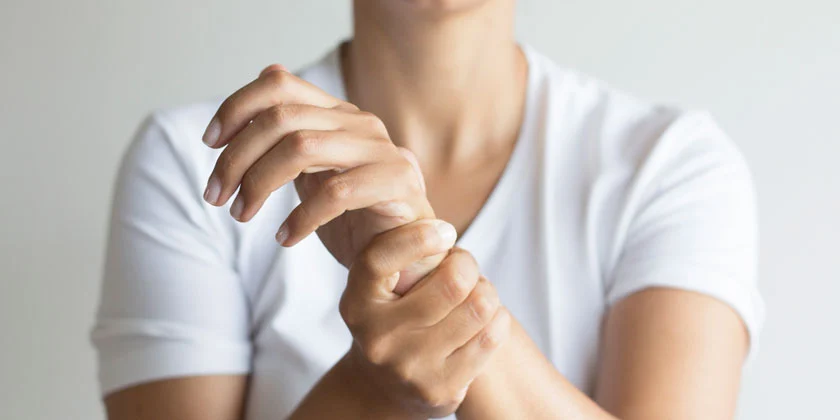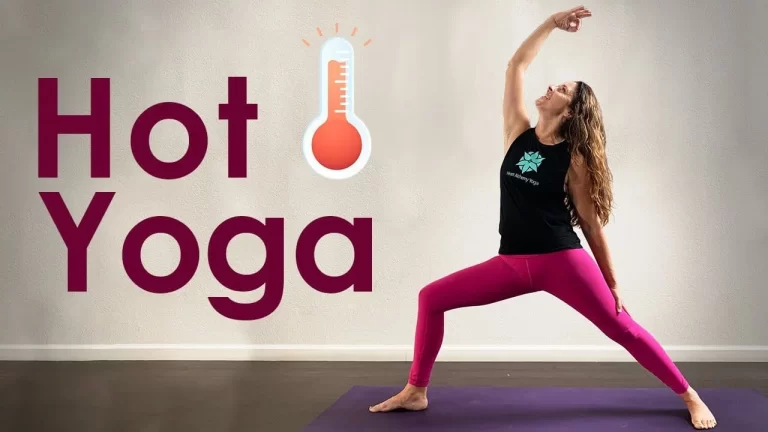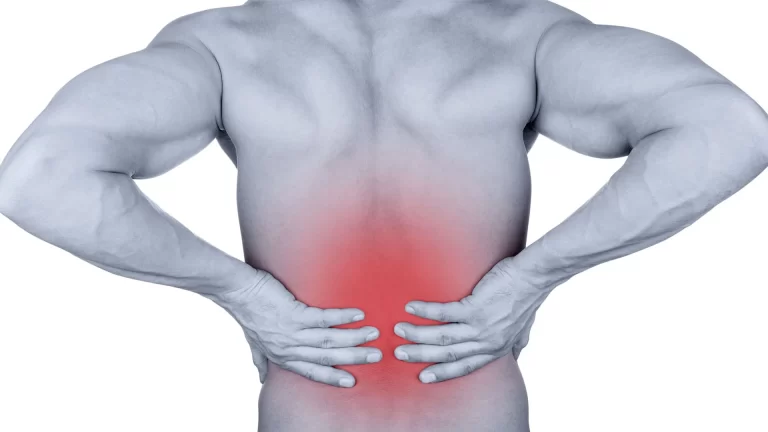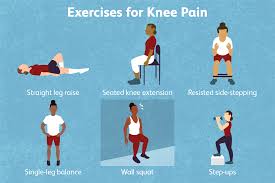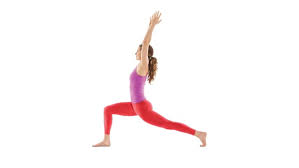Best Hand exercise to improve Mobility, Flexibility, and Strength
Table of Contents
Introduction
Hand Exercise is the best option to make your Hands flexible, and powerful to perform all day-to-day activities with ease. There are many health benefits of doing regular exercise and also reduces the risk of Injury.
- The hand exercise Strengthens the muscles around the joints for better support. It helps to Increase the circulation of synovial fluid. It helps to Improve blood flow to your hands, warming the muscles and ligaments. It helps to Improve flexibility. It helps to Improve the range of motion. It helps to reduce joint damage. It also helps to Reduce the risk of injury by elongating the muscles and Relieving pain.
- A hand is made up of so many different types of bones, muscles, and ligaments that allow for a large amount of movement and dexterity. There are 3 major types of bones present in the hand itself, which include
- The Phalanges: The fourteen bones are present in the fingers of each hand and also present in the toes of each foot. Each finger has three phalanges (the distal, middle, and proximal finger); the thumb only has 2.
- The Metacarpal bones: The five metacarpal bones that compose the middle part of the hand.
- The Carpal Bones: The eight carpal bones create your wrist. The 2 rows of carpal bones are connected to 2 bones of the arm which are the ulna bone and the radius bone.
- Numerous muscles, ligaments, tendons, and sheaths can be found in the hand. The muscles are the structures that can contract and allow movement of the bones in the hand. The ligaments are the fibrous tissues that help bind together the joints within your hand. The sheaths are the tubular structures that surround part of the fingers. The tendons connect the muscles in the arm or hand to the bone to allow movement.
- In addition, there are arteries, veins, and nerves within the hand that provide blood flow and sensation to your hand and fingers.
- Hand exercise includes different types of exercise like,
- Passive exercise
- Active exercise
- Strengthening exercise
Health benefits of hand exercise
- It Strengthens the muscles around the joints for better support
- It helps to Increase the circulation of synovial fluid (lubricates and helps cushion the joints to keep them moving smoothly)
- It helps to Improve blood flow to your hands, warming the muscles and ligaments
- It helps to Increase the oxygen and nutrients that circulate through the joint’s membranes, triggering the process of removing cell debris from joints
- It helps to Improve flexibility
- It helps to Improve the range of motion
- It helps to reduce joint damage
- Reduce the risk of injury by elongating the muscles
- Helps to Relieve pain
Passive (Stretching) exercise
Passive motion is when your uninjured hand helps the injured hand to achieve more range.
Passive Finger Flexion (composite)
- Use your uninjured hand to help push down the big knuckles and the tips of the fingers toward your palm. If all fingers are stiff, do each individually.
- Hold 30 seconds. You can repeat 4 times with each stiff finger.
- Do it 3 times a day.
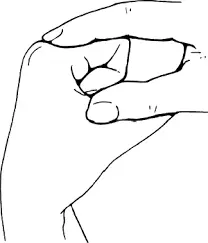
Passive Intrinsic Stretch
- Use your non-injured hand to push your affected finger(s) in and back so that only the top two joints bend.
- Hold 30 seconds. Repeat 4 times. Do it 3 times a day.
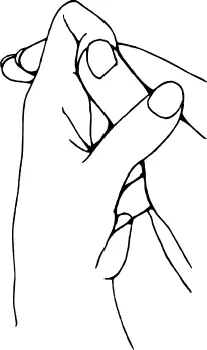
Passive Finger Extension (PIP joint)
- Use your noninjured hand to gently straighten the affected finger.
- Hold 30 seconds. Repeat 4 times. Do 3 times a day
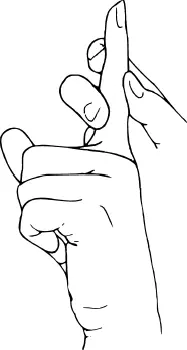
Passive Finger Extension (composite)
- Place hands together.
- Hold 30 seconds. Repeat 4 times. Do it 3 times a day.
Thumb Flexion
- Use your uninjured hand to bend the thumb down so that the gentle stretch is felt.
- Hold 30 seconds. Repeat 4 times. Do it 3 times a day.
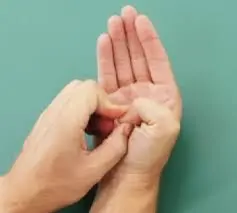
Thumb Extension
- With your hand flat on a table, gently stretch your thumb out.
- Hold 30 seconds. Repeat 4 times. Do it 3 times a day.
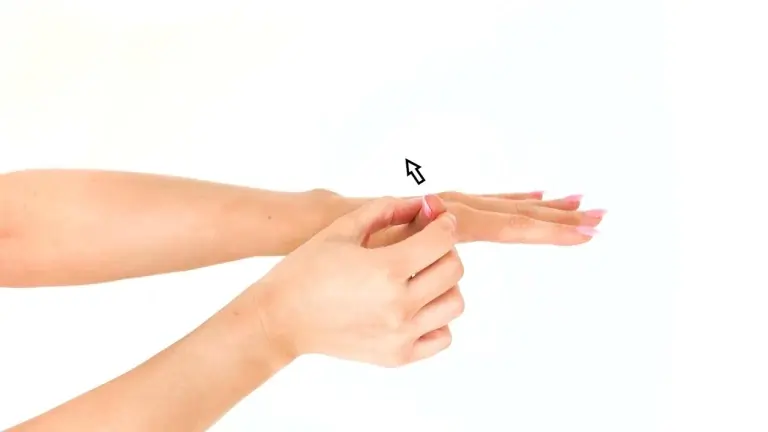
Thumb Abduction
- Stretch your thumb out from your palm as if you are opening it up to hold the large jar. Stretch at the big thumb knuckle, not at the tip.
- Hold 30 seconds. Repeat 4 times. Do 3 times a day
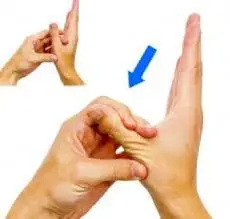
Active exercise
Active motion is when your injured wrist or fingers move without any help from your other hand.
Finger Flexion/Extension
- Make a fist. Hold 3 seconds. Straighten fingers fully.
- Hold 3 seconds. Repeat 5-10 times. Do it 3 times a day.
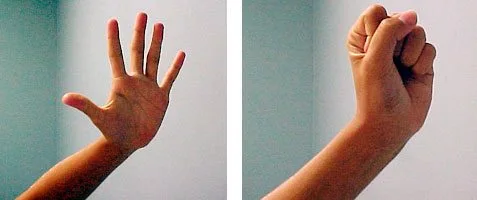
Isolated DIP (tip) Flexion
- Hold the affected finger just below the first crease and bend your tip down.
- Hold 3 seconds. Repeat 5 to 10 times. Do it 3 times a day.
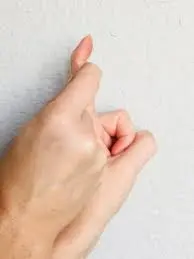
Isolated PIP (middle joint) Flexion
- Hold the affected finger just below the middle crease and bend your middle and tip joints down.
- Hold 3 seconds. Repeat 5 to 10 times. Do it 3 times a day.
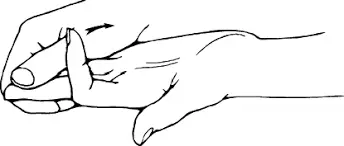
Isolated FDS Glide
- Holding all other fingers back, gently bend the target finger as far as it will go comfortably. Do not strain the finger.
- The tip of your finger will not bend and that is normal.
- Hold 3 seconds. Repeat 5 to 10 times. Do it 3 times a day.
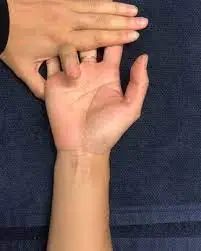
Finger Abduction/Adduction
- With your hand flat on a table, spread your fingers apart. Hold 3 seconds.
- Squeeze fingers together.
- Hold 3 seconds. Repeat 5-10 times. Do it 3 times a day.
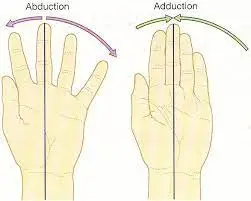
Isolated IP (Tip) Flexion
- Hold your thumb just below the first crease and only bend the tip of the thumb.
- Hold 3 seconds. Repeat 10 times. Do it 3 times a day.
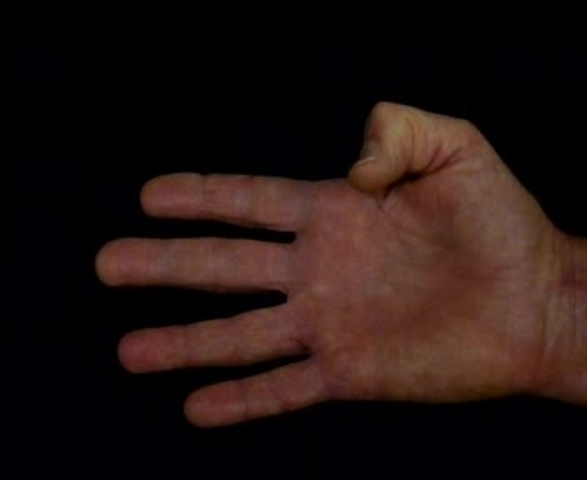
Thumb Opposition/Flexion
- Touch the thumb to the tip of each finger. When you are able to do this easily, then touch further down on each finger until you
- can able to touch the base of each finger.
- Repeat 5 to 10 times. Do it 3 times a day.
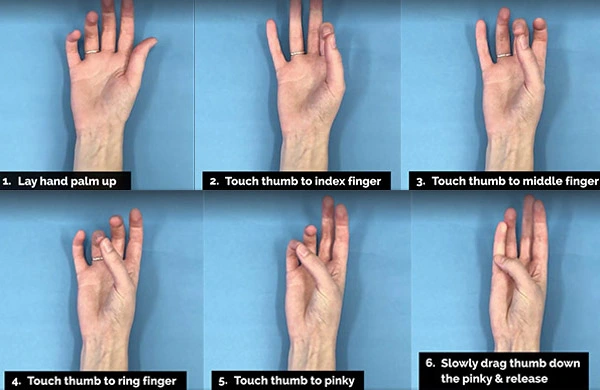
Thumb Palmar Abduction
- Lie your hand on a table resting on the little finger. Move your thumb out away from the palm as if you are reaching for a wide jar.
- Hold 3 seconds. Repeat 10 times. Do it 3 times a day.
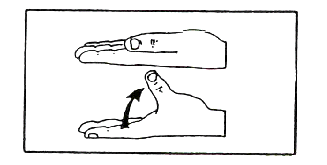
Thumb Radial Abduction
- With your hand flat on the table, slide your thumb out to the side. Hold 3 seconds. Slide back in toward the index finger. Hold 3 seconds.
- Repeat 10 times. Do it 3 times a day.

Thumb Circumduction
- Move your thumb in circles 10 times in each direction
- Do it 3 times a day.
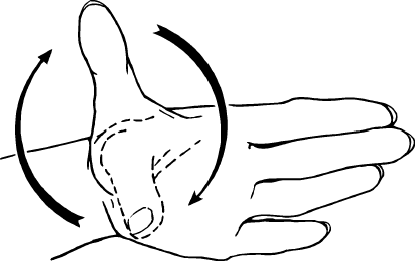
Tendon Gliding
- Move from one position to the next.
- Hold 3 seconds. Repeat 5 to 10 times. Do it 3 times a day.
- Start with fingers straight
- Bend only at the big knuckles with the rest of your fingers straight
- Make a fist with the tips straight – not bending into the palm
- Claw fingers so the big knuckles do not bend
- Full fist
Strengthening exercise
Ball Squeeze
- Hold the soft ball in your palm and squeeze it as hard as you can. Hold for some seconds and then release. Repeat 10 to 15 times on both side hands. You can do this exercise two to three times in one week, but rest your hands for 48 hours in between sessions.
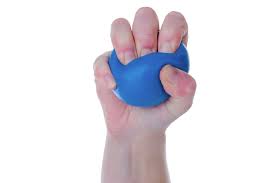
Thumb Pinch Strengthening
- Use the putty, and roll it out into a ‘hot dog’ shape about 1 to 2 inches thick. with the help of your thumb and index finger, squeeze along the putty, making little indents along the length of the putty.
- Do this 10 to 20 times.

Rubber Band Abduction
- Place the rubber band over all four fingers. Do not include the thumb. Now spread your fingers apart as far as you can, hold for 5 seconds then relax. Repeat 10 to 20 times.
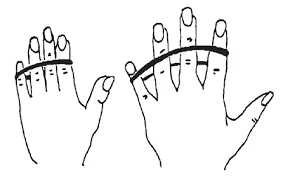
Isometric Hooks (Claw)
- You don’t need any equipment for this hand-strengthening exercise. All you need is your other hand for help. An isometric exercise is when you contract the muscle without moving; using the maximal voluntary contraction.
- For the Isometric Hooks exercise, place your fingers in the hook fist, then clasp, or hook, the fingers together at your chest. your one hand will be facing palm up and the other hand will be facing palm down.
- Once the fingers are clasped together, use your arms to pull in an outward position while maintaining the hook fists. Hold for 5 seconds then relax. Repeat 10 to 20 times with the right hand on top then switch to the left hand on top, and repeat.
- This is not only good for the fingers but also for your whole upper body.

Rubber Band ‘C’ with Fingers and Thumb
- Place the rubber band over all four fingers and the thumb. Keeping your fingers together, open the thumb out to the side into a ‘C’ position (not a thumbs-up position).
- Make a ‘C’ with your fingers and thumb, hold for 5 seconds then relax. Repeat 10 to 20 times. Your thumb and fingers should look like you are opening your hand to hold the cup or can of pop.
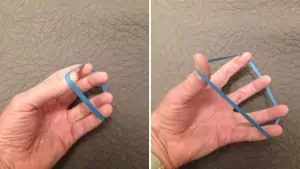
Hand strengthening exercises for adults
Grip Strengthener: Hold the soft ball in your palm and squeeze it as hard as you can. Hold for some seconds and then release. Repeat 10 to 15 times on both side hands. You can do this exercise two to three times in one week, but rest your hands for 48 hours in between sessions.
Rubber Band Abduction: Place the rubber band over all four fingers. Do not include the thumb. Now spread your fingers apart as far as you can, hold for 5 seconds then relax. Repeat 10 to 20 times.
Thumb Pinch Strengthening: Use the putty, and roll it out into a ‘hot dog’ shape about 1 to 2 inches thick. using your thumb and index finger, pinch along the putty, making little indents along the length of the putty. Do this 10 to 20 times.
Physical Therapy exercises for hand and wrist
Wrist Flex and Extend: You have to hold your arm straight out in front of you, wrist and hand straight, the palm of your hand facing down. Bend your wrist down so your fingers point toward the ground. Use your other side hand to increase the stretch, gently pulling the fingers toward your body. You can hold for 15 to 30 seconds then relax.
Grip Strengthener: Hold the soft ball in your palm and squeeze it as hard as you can. Hold for some seconds and then release. Repeat 10 to 15 times on both side hands. You can do this exercise two to three times in one week, but rest your hands for 48 hours in between sessions.
Hand therapy exercises after surgery
Finger Flexion/Extension
Make a fist. Hold 3 seconds. Straighten fingers fully.
Hold 3 seconds. Repeat 5-10 times. Do it 3 times a day.
Passive Finger Flexion (composite)
Use your uninjured hand to help push down the big knuckles and the tips of the fingers toward your palm. If all fingers are stiff, do each individually.
Hold 30 seconds. You can repeat 4 times with each stiff finger.
Do it 3 times a day.
Thumb Opposition/Flexion
Touch the thumb to the tip of each finger. When you are able to do this easily, then touch further down on each finger until you
can able to touch the base of each finger.
Repeat 5 to 10 times. Do it 3 times a day.
Ball Squeeze
Hold the soft ball in your palm and squeeze it as hard as you can. Hold for some seconds and then release. Repeat 10 to 15 times on both side hands. You can do this exercise two to three times in one week, but rest your hands for 48 hours in between sessions.
Thumb Pinch Strengthening
Use the putty, and roll it out into a ‘hot dog’ shape about 1 to 2 inches thick. using your thumb and index finger, pinch along the putty, making little indents along the length of the putty.
Do this 10 to 20 times.
How to increase hand muscle?
Grip Strengthener: Hold the soft ball in your palm and squeeze it as hard as you can. Hold for some seconds and then release. Repeat 10 to 15 times on both side hands. You can do this exercise two to three times in one week, but rest your hands for 48 hours in between sessions.
Rubber Band ‘C’ with Fingers and Thumb: Place the rubber band over all four fingers and the thumb. Keeping your fingers together, open the thumb out to the side into a ‘C’ position (not a thumbs-up position). Make a ‘C’ with your fingers and thumb, hold for 5 seconds then relax. Repeat 10 to 20 times. Your thumb and fingers should look like you are opening your hand to hold the cup or can of pop.
FAQ
Grip Strengthener: Hold the soft ball in your palm and squeeze it as hard as you can. Hold for some seconds and then release. Repeat 10 to 15 times on both side hands. You can do this exercise two to three times in one week, but rest your hands for 48 hours in between sessions. The second exercise you can do at home is Thumb Pinch Strengthening. Use the putty, and roll it out into a ‘hot dog’ shape about 1 to 2 inches thick. with the help of your thumb and index finger, squeeze along the putty, making little indents along the length of the putty.
Do this 10 to 20 times.
Wrist Flex and Extend: You have to hold your arm straight out in front of you, wrist and hand straight, the palm of your hand facing down. Bend your wrist down so your fingers point toward the ground. Use your other side hand to increase the stretch, gently pulling the fingers toward your body. You can hold for 15 to 30 seconds then relax.
Finger Flexion/Extension: Make a fist. Hold 3 seconds. Straighten fingers fully. Hold 3 seconds. Repeat 5-10 times. Do it 3 times a day. The second exercise is Grip Strengthener: Hold the soft ball in your palm and squeeze it as hard as you can. Hold for some seconds and then release. Repeat 10 to 15 times on both side hands. You can do this exercise two to three times in one week, but rest your hands for 48 hours in between sessions.
The good news is that physical therapy for arthritis, in combination with other types of medical treatments, has been shown to slow the progression of the disease, and even help to reduce pain and preserve mobility. Hand therapy involves performing specific exercises meant to improve the range of motion in your hands and also increase the strength of the hand.
Grip Strengthener: Hold the soft ball in your palm and squeeze it as hard as you can. Hold for some seconds and then release. Repeat 10 to 15 times on both side hands. You can do this exercise two to three times in one week, but rest your hands for 48 hours in between sessions. The second exercise you can do at home is Thumb Pinch Strengthening. Use the putty, and roll it out into a ‘hot dog’ shape about 1 to 2 inches thick. using your thumb and index finger, pinch along the putty, making little indents along the length of the putty.
Do this 10 to 20 times.

